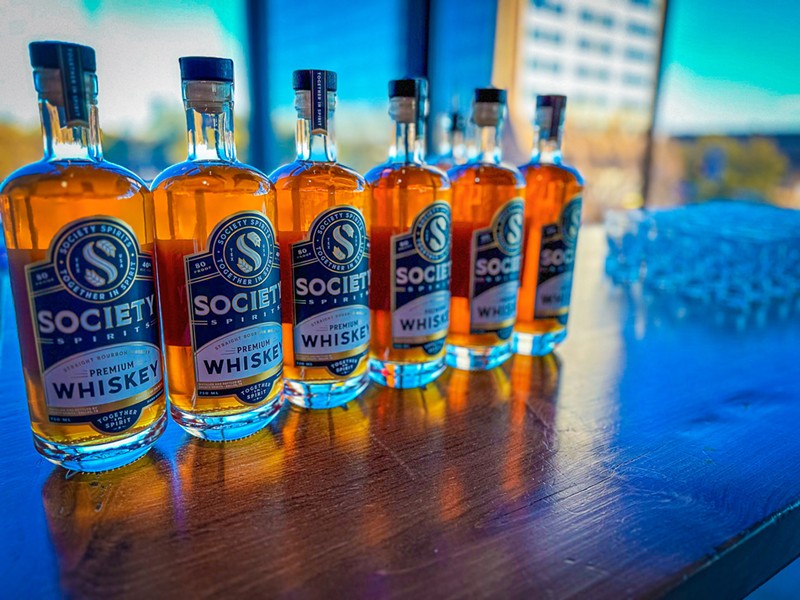From Mash to Bottle: The Intricacies of Craft Distillery Production Revealed
Craft distillery production is a thorough procedure that includes a collection of intricate steps to change raw active ingredients into a polished spirit all set for intake. From the initial phases of mash preparation to the last touches of labeling and bottling, each stage of production plays an important function in shaping the personality and top quality of the last product (Galveston Liquor). As we untangle the intricacies of craft distillery manufacturing, we will certainly discover the artistry and science behind each step, dropping light on the covert globe that finishes in the development of a special and outstanding spirit
The Art of Mash Preparation
Mash prep work in craft distillery production is a precise procedure that lays the foundation for the high quality and taste account of the final distilled spirits. The art of mash prep work entails integrating grains such as barley, corn, rye, or wheat with water and enzymes to transform the starches right into fermentable sugars. This vital action calls for precision in the selection of grains, water high quality, and enzyme activity to make sure optimal sugar extraction during fermentation.
Craft distilleries take wonderful treatment in sourcing premium grains as they directly impact the preference and character of the spirits. The percentages of different grains utilized in the mash costs are additionally very carefully computed to accomplish the preferred taste profile. Furthermore, aspects such as water temperature level, pH levels, and mixing methods play a considerable role in the mashing procedure.
When the mash is prepared, it goes through fermentation, where yeast is contributed to convert sugars into alcohol. The quality of the mash straight influences the efficiency of fermentation and eventually, the general top quality of the distilled spirits. Craft distilleries satisfaction themselves on their focus to detail throughout mash preparation, recognizing its relevance in creating extraordinary spirits.
Fermentation: Transforming Ingredients Into Alcohol
Exactly how do craft distilleries change thoroughly ready components into alcohol via the procedure of fermentation? Fermentation is an important action in craft distillery manufacturing where yeast communicates with sugars to develop alcohol. After the mash prep work stage, the liquid, called wort, is moved to fermentation storage tanks. Yeast is then included in the wort, where it takes in the sugars existing in the combination, converting them right into alcohol and co2.

During fermentation, the temperature and setting are very closely kept track of to make certain optimal problems for yeast task. This process usually takes numerous days to a week, depending on the preferred alcohol web content and flavor account. As the yeast works its magic, the fluid undertakes significant chemical modifications, causing the formation of alcohol.
When fermentation is total, the resulting fluid is called the laundry or beer. This alcoholic fluid works as the foundation for the succeeding purification procedure, where it will be changed right into the last spirit through careful workmanship and precision methods.
Distillation Techniques and Tools
Using specific devices and specific learn this here now strategies, craft distilleries use different distillation approaches to remove and fine-tune the alcohol web content of the fermented laundry, inevitably forming the read personality and top quality of the last spirit. Hybrid stills integrate aspects of both pot and column stills, providing distillers flexibility in crafting a varied range of spirits. Craft distillers typically experiment with different tools arrangements and distillation approaches to accomplish special and extraordinary spirits that show their creative thinking and experience.
Aging Refine: From Barrel to Bottle
With the distilled spirits currently prepared, the emphasis moves towards the critical stage of the aging process, where the improvement from barrel to bottle imbues the fluid with distinct flavors and features. The choice of barrel type, whether oak, charred, or previously used for other spirits, significantly affects the final preference profile.

Bottling and Classifying: Last Touches
Upon conclusion of the aging process, the craft distillery meticulously continues with the careful tasks of classifying and bottling, adding the final touches that will provide the spirit to customers. Craft distilleries often use automated bottling lines outfitted with machinery such as labelers, cappers, and fillers to streamline the procedure.
Tags frequently include essential info like the spirit's name, alcohol material, and origin. In addition, some craft distilleries hand-label their containers for a personalized touch, especially for minimal edition launches.
When the bottles are filled, sealed, and labeled, they undergo a last evaluation to ensure they meet the distillery's standards. This focus to detail in the identifying and bottling process reflects the craft distillery's dedication to providing a costs product to customers.
/https://static.texastribune.org/media/images/2017/06/07/Brewery-Rich-12-TT-crop.jpg)
Conclusion
Finally, the process of craft distillery manufacturing entails precise actions such as mash preparation, fermentation, distillation, aging, and bottling (Galveston Liquor). Each stage requires cautious attention to information and customized devices to ensure the last product fulfills high standards of top quality. From changing active ingredients into alcohol to bottling and classifying the finished reference product, craft distilleries showcase the art and scientific research behind creating premium spirits for critical consumers
Craft distillery manufacturing is a thorough process that involves a collection of complex actions to transform raw active ingredients into a refined spirit ready for intake.Mash preparation in craft distillery production is a careful process that lays the foundation for the quality and taste profile of the final distilled spirits. Craft distilleries satisfaction themselves on their interest to information throughout mash prep work, recognizing its importance in developing extraordinary spirits.
Upon completion of the aging procedure, the craft distillery meticulously proceeds with the meticulous tasks of bottling and identifying, including the final touches that will certainly present the spirit to customers. From transforming active ingredients into alcohol to bottling and classifying the finished item, craft distilleries display the art and science behind developing superior spirits for critical customers.